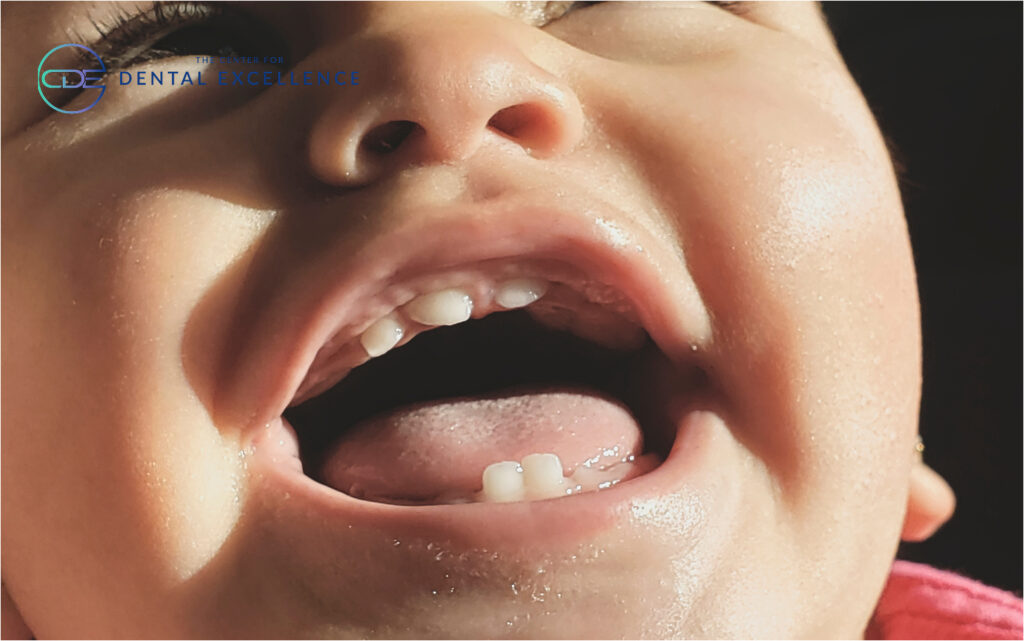When your baby arrives, their perfectly tiny features captivate your attention—but sometimes, hidden beneath those adorable lips or under that sweet tongue lies a condition that requires your awareness. Lip and tongue ties affect many newborns, often going unnoticed until feeding struggles begin. Recognizing these conditions early can transform your baby’s developmental journey and save countless hours of unnecessary challenges.

What Are Lip and Tongue Ties?
Lip and tongue ties are common oral conditions present at birth that restrict the normal movement of either the tongue or the upper lip. These conditions occur when the thin pieces of tissue that connect the tongue to the floor of the mouth (lingual frenulum) or the upper lip to the gums (labial frenulum) are unusually tight, thick, or short.
Anatomical Context
- Tongue Tie (Ankyloglossia): The lingual frenulum is a small band of tissue that connects the underside of the tongue to the floor of the mouth. When this band is too tight or extends too far toward the tip of the tongue, it restricts tongue movement, causing a tongue tie.
- Lip Tie: The labial frenulum connects the upper lip to the gum just above the front teeth. When this tissue is too tight or thick, it can restrict the upper lip’s movement, creating a lip tie.
Both conditions can impact your baby’s ability to move these oral structures properly, which is crucial for effective feeding, proper speech development, and overall oral health.
Types and Classifications
Not all lip and tongue ties are the same—some cause more restrictions than others. To help assess the severity, providers often use the Kotlow classification system, which breaks ties down into different levels based on how much they affect movement and function.
Tongue Tie Classifications
Class 1: The frenulum attaches to the tip of the tongue, severely restricting movement.
Class 2: The frenulum attaches 2-4mm behind the tongue tip, moderately restricting movement.
Class 3: The frenulum attaches to the middle of the tongue, creating mild to moderate restriction.
Class 4: The frenulum attaches to the base of the tongue, often creating a “posterior” or “submucosal” tie that can be difficult to visualize but still causes significant functional issues.
Lip Tie Classifications
Class 1: Minimal tissue attachment, primarily connecting to the gum above the teeth.
Class 2: Attachment inside the gum line, creating moderate restriction.
Class 3: Attachment extends to the space between the front teeth, potentially causing a gap.
Class 4: Attachment extends into the hard palate, significantly restricting lip movement.

Early Warning Signs
As a parent, you’re constantly watching your baby develop and grow. When it comes to lip and tongue ties, catching the signs early can make all the difference.
Here’s what you should watch for:
Feeding Challenges
Whether you’re breastfeeding or bottle-feeding, lip and tongue ties often reveal themselves first during feeding time. Your baby might struggle to maintain a good latch, causing frustration for both of you. You might notice them frequently breaking suction, making clicking sounds, or seeming exhausted after minimal feeding time.
Many moms experience painful nursing when their baby has a tie—cracked nipples, prolonged soreness, or that pinching sensation that makes them dread the next feeding session. If you’re bottle-feeding, you might notice excessive air intake, formula dribbling from the corners of your mouth, or unusually long feeding times.
Speech Development Concerns
While your newborn isn’t speaking yet, early sounds can provide clues. Babies with tongue ties might have difficulty making certain sounds that require tongue elevation or extension.
As they grow, you might notice they struggle with sounds like “t,” “d,” “l,” and “r.” Some parents report their children having trouble licking ice cream cones or touching their tongue to their upper lip—seemingly small details that can signal restricted tongue movement.
Disrupted Sleep Patterns
Those middle-of-the-night wake-ups might be more than just normal baby behavior. Infants with ties often struggle with shallow breathing during sleep or may wake frequently due to hunger (because they couldn’t feed efficiently earlier). You might notice your baby seems particularly restless, makes clicking or smacking sounds during sleep, or wakes up seeming frustrated and hungry despite recent feedings.
Dental Development Red Flags
Even before those first teeth emerge, oral ties can impact dental development. As teeth begin to appear, watch for unusual gaps between the front teeth or signs that teeth aren’t emerging properly. Some babies with lip ties develop calluses on their upper lip or gum line from attempting to compensate during feeding.
Signs of Discomfort
Your baby communicates discomfort in subtle ways. If they seem particularly fussy during or after feedings, arch their back, pull away frequently, or cry when you try to position them for feeding, these could be signals that something isn’t right. Some babies with ties may also show signs of reflux or colic—excessive gassiness, frequent spitting up, or inconsolable crying periods.
Trust your instincts as a parent. If something about your baby’s feeding, sleeping, or comfort level doesn’t seem right, it’s worth discussing with your pediatric dentist or healthcare provider. Early intervention can transform these challenging experiences into distant memories rather than ongoing struggles.

Health Implications of Untreated Ties
When lip and tongue ties remain untreated, they can affect your child’s development in several important ways.
Nutritional Challenges
Untreated ties often make efficient feeding difficult. Your baby may struggle to transfer milk effectively, leading to inadequate nourishment and stunted growth. Some infants compensate with more frequent feedings but still have trouble getting adequate nutrition. This can be exhausting for both baby and parents, sometimes leading to early weaning when breastfeeding becomes too challenging.
Speech and Language Development Delays
Proper tongue movement is essential for clear speech. Children with untreated ties frequently struggle with certain sounds, particularly those requiring tongue elevation like “t,” “d,” “n,” and “l.” These difficulties can affect communication confidence and may require speech therapy that might have been unnecessary with earlier intervention.
Dental Problems
Untreated ties can impact dental development in several ways. Gaps between front teeth, increased cavity risk along the gum line, and alignment issues may develop. The restricted frenum can pull on gum tissue, sometimes creating recession as your child grows. These issues often lead to more extensive dental work later.
Sleep-Disordered Breathing
Children with untreated ties commonly develop mouth breathing patterns that affect sleep quality. You might notice snoring, restless sleep, or daytime fatigue. Poor sleep can impact behavior, concentration, and overall well-being. Chronic mouth breathing may also influence facial development over time.
Long-term Oral Function Issues
The effects of untreated ties can persist into adulthood. Simple activities like eating certain foods or maintaining oral hygiene may be more challenging. Some adults develop jaw discomfort from years of compensatory movements. Addressing ties early can prevent these adaptations from becoming permanent.
Early evaluation and treatment, when necessary, can help your child avoid these potential complications and develop optimal oral function.

If Your Child Has Lip and Tongue Tie, A Frenectomy Can Help
A frenectomy is a quick, precise procedure that releases restricted tissue to restore normal function. Using advanced laser technology, we can complete this gentle treatment in minutes with minimal discomfort and no sutures needed.
Most babies can feed immediately afterward, with parents often noticing immediate improvement in latch and feeding efficiency. With proper aftercare exercises to prevent reattachment, the results are typically permanent, allowing your child’s oral development to progress naturally.
Your Child’s Journey Begins with Your Awareness
Getting ahead of lip and tongue ties means spotting them early. When you recognize the signs and seek help promptly, you’re removing potential roadblocks to your child’s development. Our dental team is ready when you need us—because every child deserves to eat, speak, and smile without limitations.